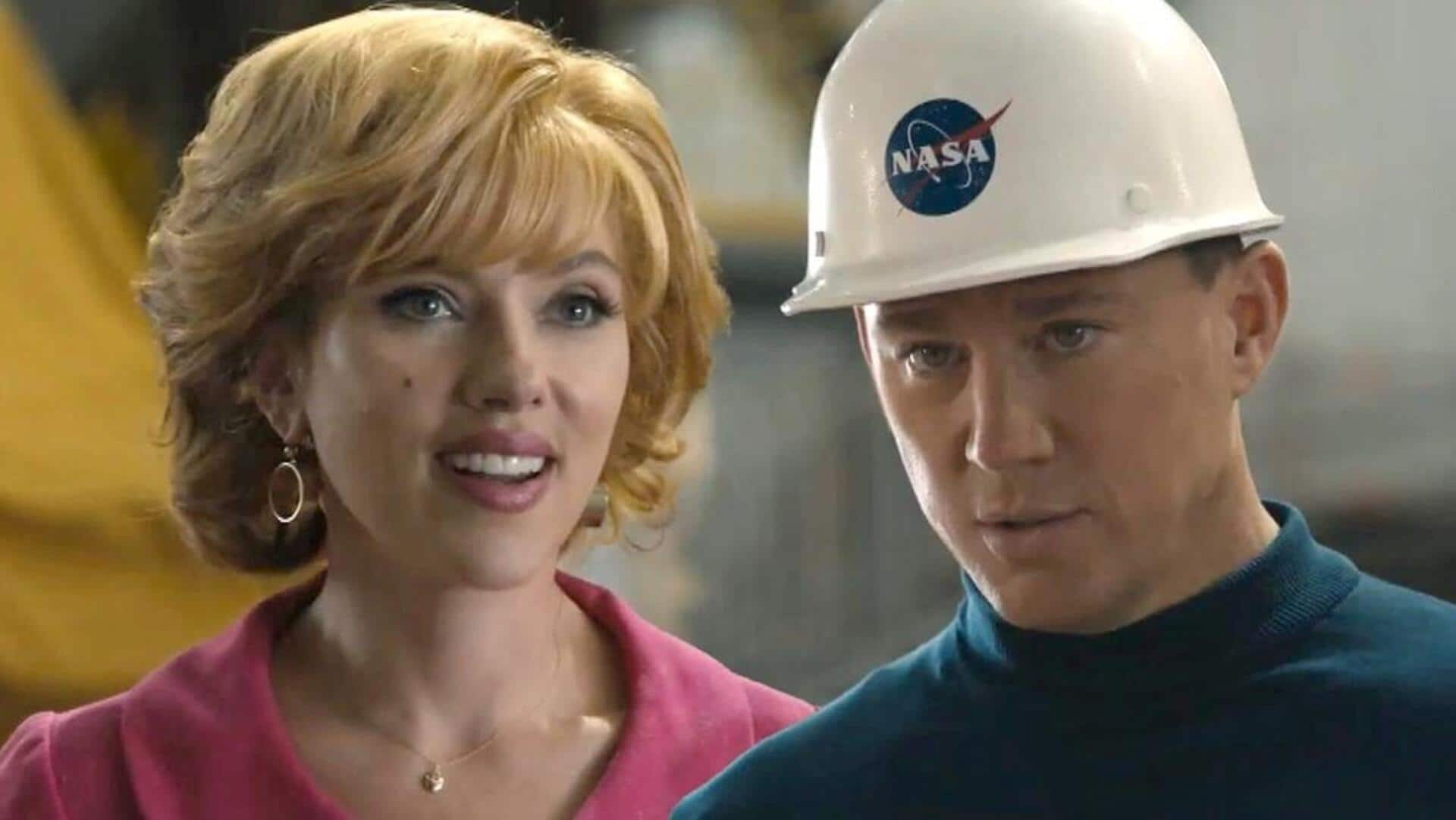
'Fly Me to the Moon' alters Apollo 11's historical facts
What's the story
Apple Originals's film Fly Me to the Moon, starring Scarlett Johansson and Channing Tatum, humorously reimagines the Apollo 11 moon landing. However, it significantly modifies historical facts such as NASA's funding and the timeline of the moon landing. The movie introduces fictional characters and situations, deviating from actual events surrounding this monumental moment in history. Here, we compile all the alterations that the movie has made from the true story.
Artistic interpretation
But first, here's everything about the movie
Fly Me to the Moon is a 2024 American historical romantic comedy-drama that features a screenplay by Rose Gilroy based on a story by Bill Kirstein and Keenan Flynn. The film also includes Jim Rash, Anna Garcia, Donald Elise Watkins, Nick Dillenburg, Ray Romano, and Woody Harrelson. The plot centers on the relationship between a marketing specialist and the NASA director overseeing the Apollo 11 launch. It hit theaters on Friday.
Historical inaccuracies
Film misrepresents NASA's funding and timeline
In the movie helmed by Greg Berlanti, NASA is depicted as struggling with funding for the Apollo 11 mission. This contradicts historical records showing that monetary issues were more significant during Project Gemini, not Apollo. The film also compresses the timeline of events, portraying the moon landing and the first moon walk as happening in a very short period, unlike the actual seven-hour span documented in Apollo: First Steps.
Character deviations
Fictional characters distort Apollo 11's real story
The film introduces Moe Berkus, a character suggesting the filming of the moon landing. In reality, NASA decided to broadcast the mission for transparency, contracting Westinghouse to create a camera. The movie also features Kelly Jones as a marketing specialist hired to promote the moon landing, while in fact, former news reporters handled public relations for Apollo 11. Lastly, Cole Davis's character is loosely based on Gene Kranz but inaccurately portrays his involvement in the Apollo 1 tragedy.
Dramatized scenes
Film's dramatic moments differ from actual events
In a key scene, Davis makes the decision for the Eagle to land on the moon with only eight percent fuel left. However, astronaut Buzz Aldrin revealed in an interview that this crucial decision was made by the astronauts themselves. The film also suggests that Armstrong and Aldrin left only footprints, a plaque, and bags of feces on the moon, while they actually left additional items including part of the lunar landing module and messages of hope from 73 countries.
Historical confirmation
Film affirms moon landing despite creative liberties
Despite its creative liberties, Fly Me to the Moon confirms that humans did land on the moon. This affirmation is crucial as the film portrays NASA faking the moon landing, a claim that has been repeatedly debunked by scientists. While the movie takes significant artistic license with historical facts, it does not dispute one of humanity's most significant achievements: landing on the moon.